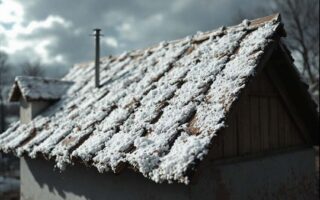When faced with a leaking basement wall, taking immediate action is crucial. Understanding the cause of the leak helps inform your repair strategy. Whether it’s hydrostatic pressure, cracks in the foundation, or improper drainage, identifying these issues can save you time and money. Assessing both the damage and severity allows you to prioritize repairs effectively. A small crack may be easy, while extensive water damage could require professional intervention. Ignoring leaks can lead to more significant problems like mold growth and structural instability.
Repairing a leaking basement from the inside is possible with various methods available. From sealing cracks with epoxy injections to applying waterproof coatings, many approaches cater to different levels of leakage. A step-by-step guide simplifies this process further. Knowing how to prepare surfaces, apply materials properly, and cure them ensures effective results for long-term prevention. Preventative measures such as improving drainage systems or installing sump pumps can help avoid future leaks. Regular maintenance checks allow homeowners to avoid potential issues before they escalate into costly repairs. Addressing a leaking basement wall promptly protects your home and enhances its value over time. Taking proactive steps today leads to peace of mind tomorrow.
Identifying the Cause of a Leaking Basement Wall

Identifying the cause of a leaking basement wall is the first step toward effective repair. Water can seep in from various sources, and pinpointing the exact entry point is crucial. Start by inspecting your property’s exterior. Make sure there are no cracks in the foundation or gaps around the windows and doors. These are common culprits for leaks. Poorly positioned downspouts or clogged gutters can direct water toward your home instead of away. Pay attention to the state of the soil, too; after a prolonged downpour, wet ground may force moisture into walls. Check for plumbing leaks inside your basement that could contribute to excess moisture.
Assessing the Damage and Severity
When dealing with a leaking basement wall, the first step is assessing the seriousness of the issue. Look for visible signs of water damage. Stains, mold growth, or peeling paint can indicate long-term moisture exposure. Cracks in the foundation or walls may signal more significant problems that need immediate attention. Use your fingers to probe any cracks; if they crumble easily, it could mean deterioration over time.
The Importance of Fixing a Leaking Basement Wall
A leaking basement wall can lead to numerous problems beyond mere aesthetics. Water intrusion creates a damp environment, inviting mold and mildew to flourish. These threaten your home’s structure and pose serious health risks for occupants. Water damage can compromise your foundation over time. Cracks may worsen, leading to costly repairs down the line. Ignoring these leaks today could mean spending significantly more tomorrow.
A wet basement reduces the overall value of your property. Prospective buyers often need to be more open to homes with unresolved moisture issues. Addressing leaks proactively enhances both safety and marketability. Fixing a leaking basement is not just about immediate repair; it’s an investment in long-term stability and peace of mind for you and your family.
Methods for Fixing a Leaking Basement Wall from the Inside

Several effective methods can be employed when tackling a leaking basement wall from the inside. One common approach is using hydraulic cement. This specially formulated material expands as it cures, creating a watertight seal in cracks and holes.
Another option involves applying a waterproofing membrane to the interior surface of the wall. These membranes act as barriers against moisture infiltration, allowing trapped water vapor to escape. For more severe leaks, consider installing an interior drainage system. This can redirect water from your walls through strategically placed drains and sump pumps.
Injecting epoxy or polyurethane foam into cracks can provide durable sealing solutions. These materials expand upon application, filling voids and preventing further leakage effectively. Choosing the right method depends on assessing your situation and damage severity.
Step-by-Step Guide to Repairing a Leaking Basement Wall from the Inside
Start by gathering your materials. You’ll need hydraulic cement, a putty knife, a wire brush, and protective gear like gloves and goggles. Prepare the area. Clear any furniture or clutter away from the wall to give yourself ample space to work. Examine the wall closely for cracks or gaps where water seeps through. Use a wire brush to remove loose debris and dirt around these areas.
The hydraulic cement should be mixed according to the instructions on the package. Apply it into the cracks using your putty knife, ensuring it’s packed tightly. The surface should be smoothed out to ensure an even finish. Allow sufficient time to cure as per product guidelines before introducing moisture again. Once dry, consider applying a waterproof sealant over the repaired areas for added protection against future leaks.
Preventative Measures to Avoid Future Leaks
Keeping your basement dry starts with proper drainage. It is important to make sure that your gutters and downspouts direct water away from your foundation. There is a significant difference that can be made by taking this simple step. Regularly inspect the exterior of your home for cracks in the foundation. Even small fissures can lead to leaks over time, so seal them promptly.
Landscaping also plays a key role. Sloping soil away from the house prevents water pooling near walls. A little planning goes a long way. They install a sump pump if you live in an area prone to heavy rainfall or flooding. These devices actively remove excess water, reducing pressure on basement walls. Ensure that windows are properly sealed and equipped with window wells where necessary. These precautions will help maintain a dry and healthy living space year-round without worrying about unexpected leaks.




